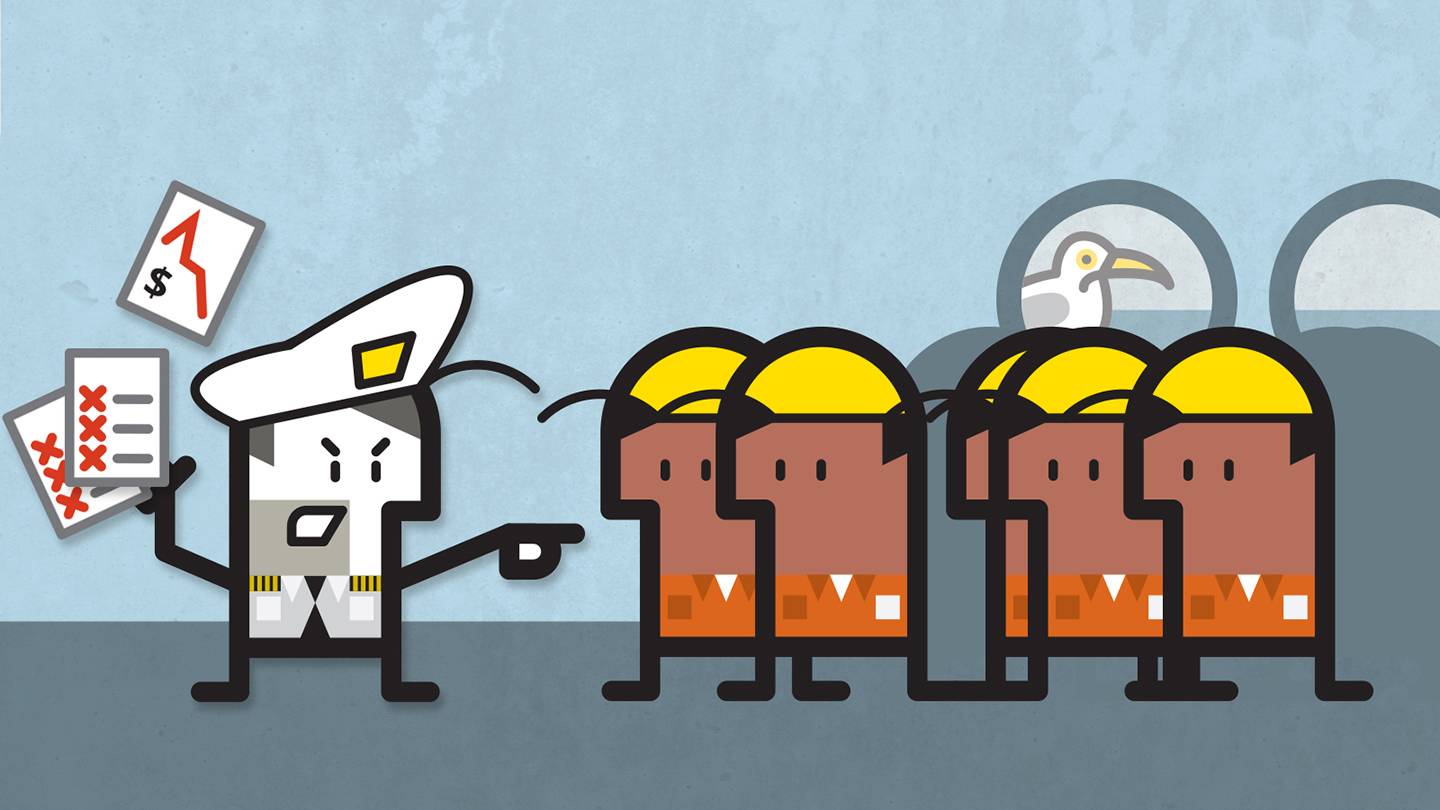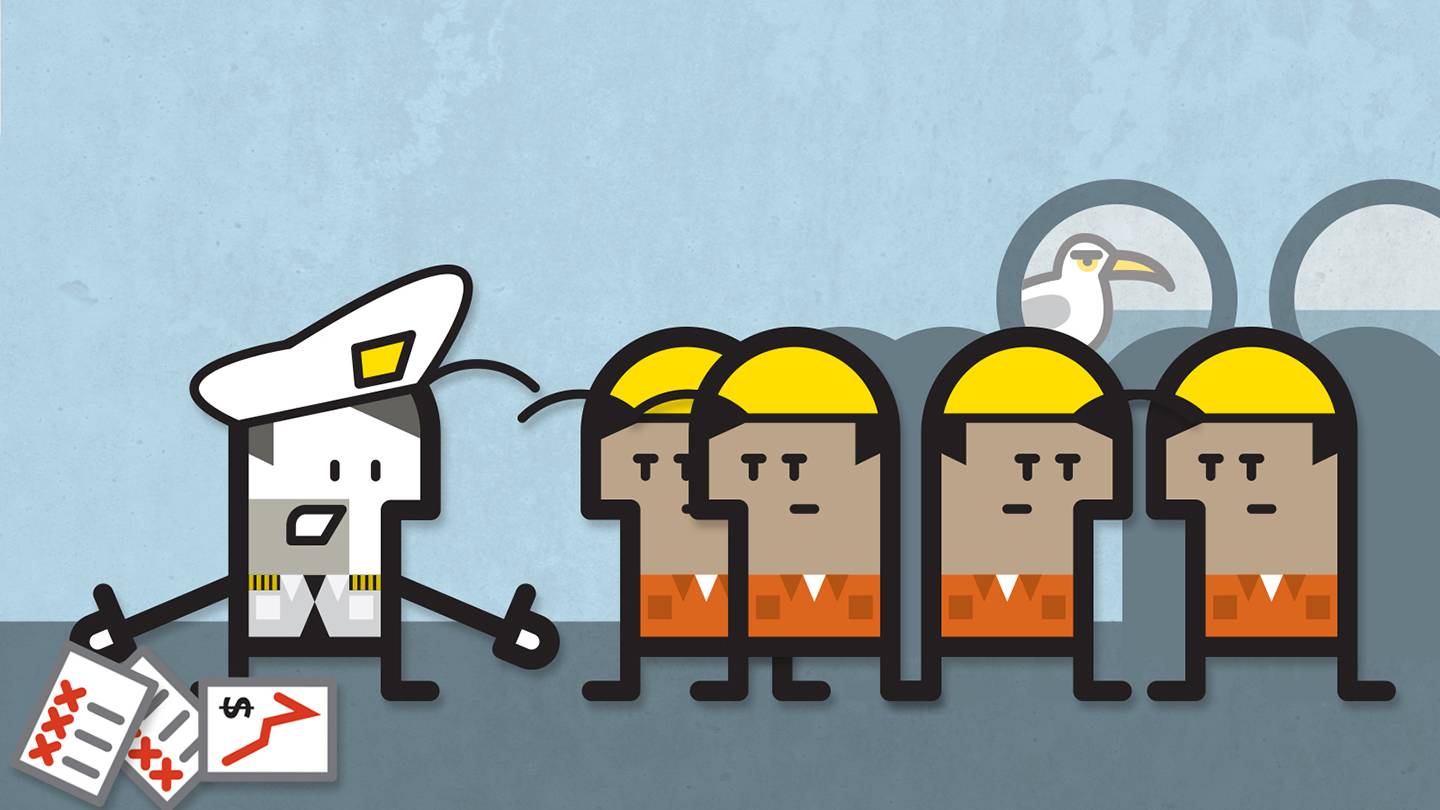Dimension 4: egalitarian vs. hierarchical
Dimension 4: egalitarian vs. hierarchical
Remember this situation? Captain Kor was not amused about the PSC inspection.

After speaking about the problems and telling the crew that he was disappointed, he came with another approach [picture below]...

Egalitarian vs. hierarchical
Now Captain Kor asked the crew members involved for ideas on how to fix things. This is something leaders in so-called 'egalitarian' cultures like to do. They may be in charge and due to their professional position, they may be 'the boss'. But on the other side, we are all just people. No big deal if someone is the boss. We can solve things together. Everybody has an opinion that counts.
In more 'hierarchical' cultures there is a big difference in how powerful and 'important' people are. Influential people should be treated with respect. Everybody should know his place in the hierarchy. If you are 'only an ordinary deck mate, it is not respectful to openly disagree with someone in a (much) higher rank.
Power distance (low vs. high)
This cultural dimension is also called power distance. Egalitarian -> low power distance. Hierarchical -> high power distance.
Need support?
- Mail us at support@spotonlearning.nl
- Use chat/mail to contact us
- Check the FAQ's
About us
Spot On Learning helps international organisations with international crews and teams learn faster.